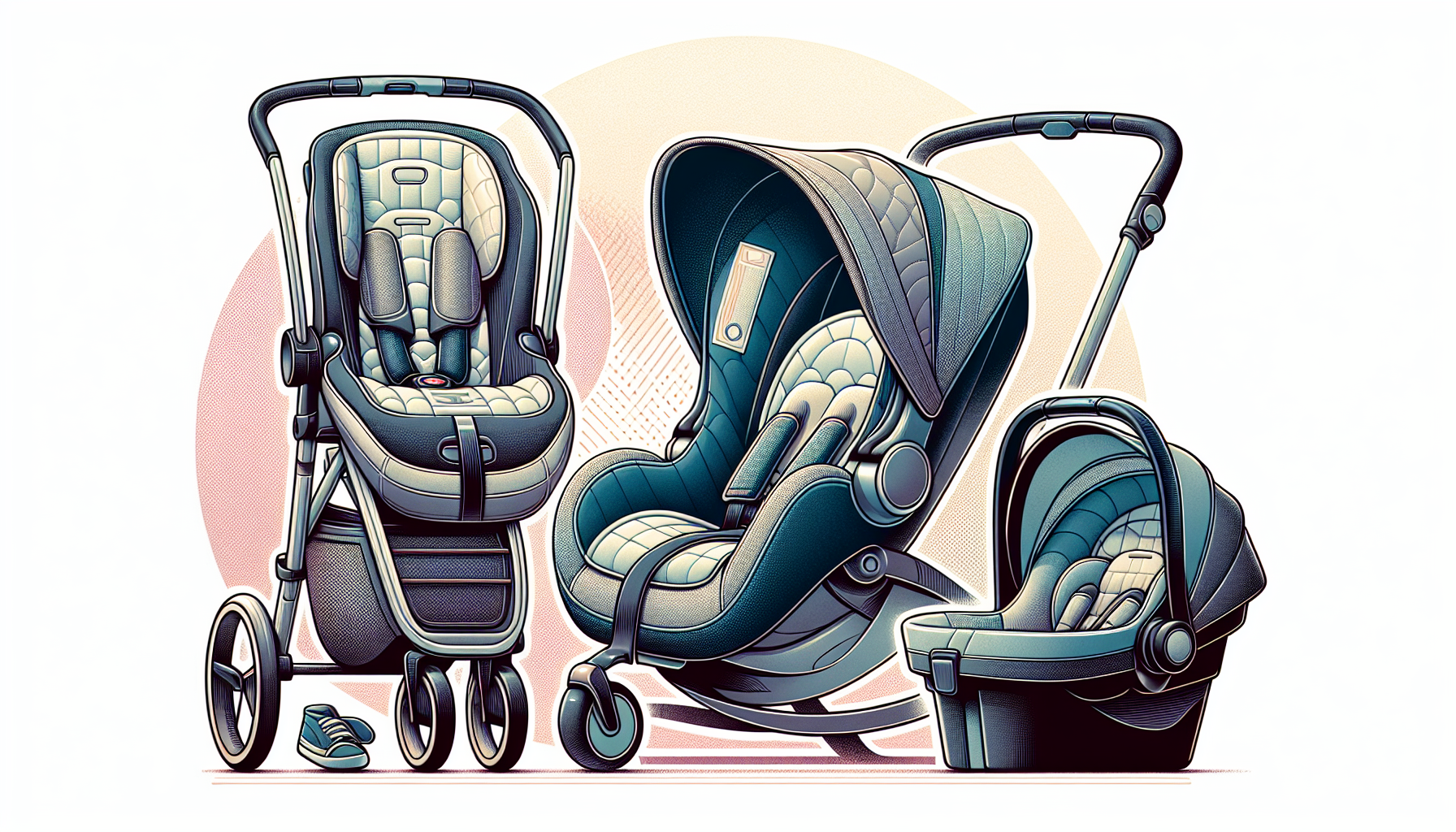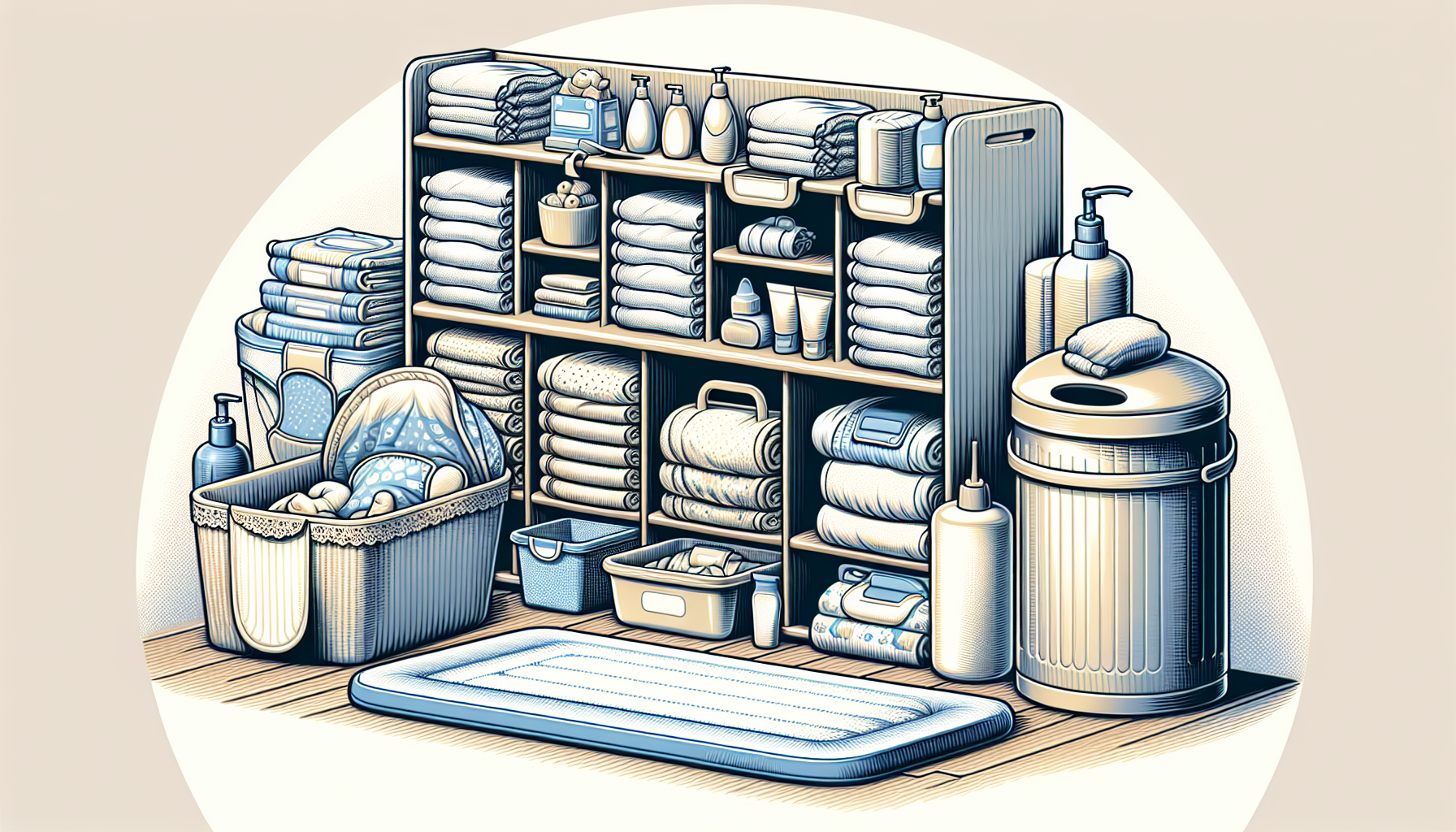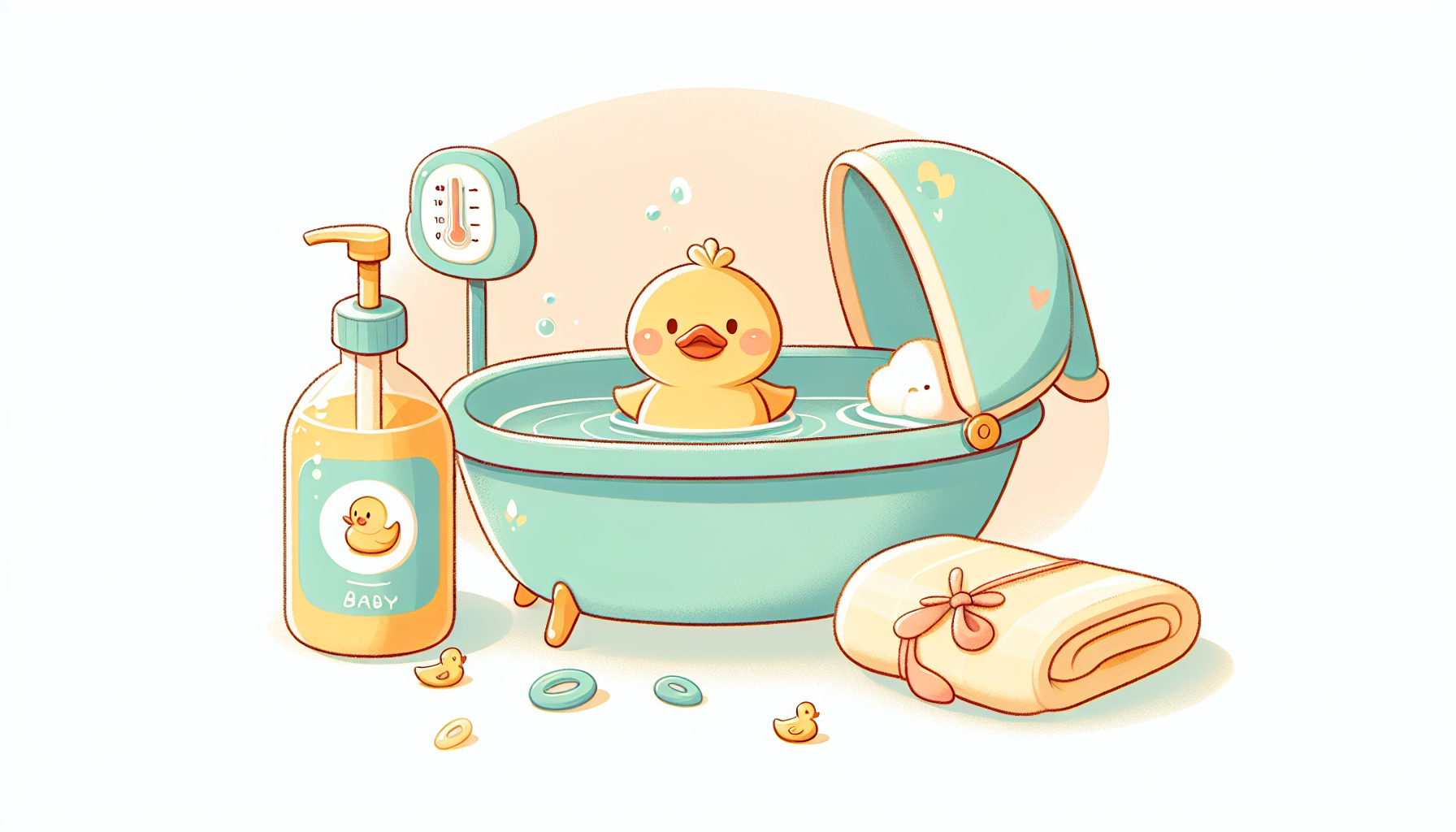Votre panier est vide
Continuer les achatsVous possédez un compte ? Connectez-vous pour payer plus vite.
Vous possédez un compte ? Connectez-vous pour payer plus vite.
Every new parent wonders what’s essential for their newborn. Our guide demystifies the essentials, providing a focused list of baby essentials to navigate your little one’s first year with confidence. It also serves as a crucial resource in preparing for the baby's arrival, ensuring parents are emotionally and relationally ready for this significant event.
Safety is key for baby gear with essentials like a modern car seat, a reliable stroller, and a comfortable baby carrier.
Opt for practicality in baby clothes with easily changeable, size-appropriate outfits, and organize for convenience.
Prepare for feeding, diapering, bath time, and sleep with the right accessories, focusing on safety, comfort, and developmental aids.

First on our list is baby gear. We know that the safety, comfort, and convenience of your little one are your top priorities. That’s why the core must-haves include a car seat for safe travel, a stroller for those lovely afternoon walks, and a baby carrier for hands-free support.
An additional essential gear includes a well-stocked diaper bag, a sun shade for car windows, and portable items like a crib and changing pad, that make life easier when you’re out and about.
When it comes to car seats, safety is paramount. There are two types of car seats that are necessary for safe travel with your little one: an infant car seat and convertible car seats. Infant car seats like the Chicco KeyFit 35 and Clek Liing are specifically designed to protect your newborn during transportation.
It’s always best to avoid secondhand car seats to ensure they are up-to-date for safety features and haven’t been compromised from past accidents.
Equally important is the stroller. Strollers offer mobility and convenience, and there’s a variety to choose from to accommodate different needs, including car seat carrier strollers, travel systems, and full-sized strollers. Consider options like the full-size UPPAbaby Cruz v2 or the lightweight BabyZen Yoyo2, which are known for their high quality.
Always prioritize the safety of your little one by ensuring that the stroller meets the latest safety standards. It’s important to regularly check for compliance with safety regulations.
Baby carriers are a lifesaver for those moments when you need your hands free but still want to keep your baby close. There are various styles of baby carriers, which include:
Wraps
Slings
Front packs
Backpacks
Each style offers different features and benefits to accommodate different preferences and needs. Carriers like the Nalakai Ring Sling and BabyBjorn One are highly recommended for their versatility and comfort.
As your baby grows, a baby backpack carrier becomes a useful tool for longer adventures, supporting their increased size and weight.

Next, let’s talk about baby clothing. While it’s tempting to buy all those adorable outfits, remember that babies grow quickly, and practicality is key. Choose pieces that are easy to put on and take off and that can accommodate your baby’s quick growth. But don’t worry, we’ve got a detailed list of necessities just for you!
Let’s start with the basics for your newborn baby. Essentials include:
Onesies
Sleepers
Socks
Hats
Bodysuits
T-shirts
Long pants
Gowns
For the initial days after birth until the umbilical cord stump falls off, side-tie or side-snap T-shirts are a great choice. And remember, it’s always good to have a few extras on hand, in case of those unexpected diaper leaks or spit-ups!
Size matters when it comes to baby clothes, especially during the first few weeks. Newborn clothes are typically designed to fit babies weighing between 5 to 7 pounds, but many infants outgrow these sizes quickly. Hence, it’s a good idea to have some 0-3 month clothing on hand as well.
Ultimately, buying bigger sizes allows your little one to grow into their clothes, making them last longer.
As you accumulate baby clothes, keeping them organized can be a real time-saver. Using baby hangers and storage bins is an efficient way to sort clothes by size, season, or frequency of use. And don’t forget about those burp cloths! They’re essential for keeping baby clothes clean during feedings and for cleaning up various messes.

Now, let’s dive into the world of diapers! Whether you choose cloth or disposable diapers, you’ll need to have a well-stocked changing station. Let’s break it down.
The choice between disposable and cloth diapers depends on what works best for your family. Disposable diapers are convenient - they offer quick changes and easy disposal. However, they can add up in cost, with an average baby potentially using up to 2,700 diapers in a year. For the environmentally conscious, compostable disposable diapers are an option that minimizes plastic waste.
Aside from diapers, there are other essentials for the changing station. These include:
a changing table and pad
wipes
washcloths
diaper rash cream
a diaper pail
And remember, a well-organized diaper bag is crucial for carrying all these supplies when you’re on the move.
If you choose to breastfeed, there are several supplies that can make the process smoother. These include:
Nursing pillows for comfort
A breast pump for breast milk extraction
Nursing bras for support
Nursing tops for ease of feeding
Nursing pads and nipple cream to help manage common challenges like leaking and nipple soreness.
If you opt for formula feeding, you’ll need bottles, nipples, formula dispensers, and bottle brushes. Sterilizing bottles and nipples before the first use is crucial for your baby’s health.
A formula dispenser can hold up to 3 bottles’ worth of formula, making it a convenient accessory for on-the-go feedings. And remember, a good bottle brush ensures thorough cleaning of feeding bottles.
When transitioning your baby off of breastmilk or infant formula, you could consider our Else Toddler Complete & Balanced Nutrition supplement, around the 12-month-mark.


Bath time should be a fun and relaxing experience for your baby. The keys to a successful bath are safety, comfort, and using the right baby wash.
Let’s dive into some bath time basics.
A good baby bathtub is essential for safe and comfortable bathing. Infant-specific bathtubs are designed with safety features that enhance the bathing experience for small babies. It’s also recommended to choose a tub that can be used until the baby is able to sit up, ensuring versatility and long-term value.
After choosing the right bathtub, it’s time to stock up on bath accessories. Essential items include gentle baby soap, baby shampoo, and soft washcloths for a clean and comfortable bath time. After bath time, soft hooded towels are ideal for keeping your baby warm and snug.
And don’t forget about those bath toys! They can transform bathing into a playful experience, contributing to your baby’s entertainment and development with baby toys.
Your baby’s health and safety are of utmost importance. In this section, we’ll cover baby-proofing, first-aid essentials, and grooming tools.
Baby-proofing your home is a must, especially as your little one starts to explore. Essential items for baby proofing include:
Gates
Cabinet locks
Edge guards
Outlet covers
Anti-tip straps to secure TVs and other furniture
These baby items will help prevent accidents and keep your baby safe.
In case of minor accidents or illnesses, it’s essential to have a well-stocked first-aid kit. Key items include:
A reliable baby thermometer
Tweezers
Antibiotic ointment
Adhesive bandages
Petroleum jelly
A bulb syringe
Don’t forget to keep a well-stocked medicine cabinet for when your child gets sick.
Playtime is not just fun, but it’s also crucial for your baby’s development. Age-appropriate toys and activities can stimulate growth and learning.
Age-appropriate toys play a vital role in sensory and developmental stimulation. For infants from birth to 6 months, consider toys such as:
rattles
large rings
squeeze toys
teething toys
soft dolls
textured balls
books
Play mats also provide a dedicated space for tummy time, which is important for their development.
Tummy time is an important activity for your baby’s development. It helps with motor development and prevents flat head syndrome.
To make tummy time engaging, provide visual stimulation such as pictures of faces and unbreakable mirrors to encourage visual development and self-recognition.
Ensuring your baby has a safe and comfortable sleep environment is crucial, especially after the baby’s arrival. A rocking chair can be a great addition to help soothe and relax both you and your baby.
In this section, we’ll cover safe sleep practices and sleep aids.
When it comes to sleep, safety is paramount. The American Academy of Pediatrics recommends using a firm sleep surface, such as a safety-standard-compliant crib mattress, bassinet, portable crib, or play yard. Soft objects and loose bedding should be kept out of the baby’s sleep area to reduce the risks of entrapment, suffocation, or strangulation.
And remember, babies are significantly less likely to suffer sudden and unexpected deaths when they sleep on their backs.
To enhance your baby’s sleep environment, consider the following sleep aids:
Swaddles: Swaddles can prevent startle reflex disruptions and help your baby sleep better.
Sleep sacks: Sleep sacks provide a cozy and secure sleeping environment for your baby.
Sound machines: Sound machines can create a serene sleep environment by playing soothing sounds or white noise.
Night lights: Night lights provide a gentle and comforting glow in the room.
By incorporating these sleep aids, you can help your baby sleep more soundly.
As a new parent or caregiver, preparing for your baby’s first year can feel overwhelming. But with this comprehensive guide, we hope you feel more equipped and less stressed. Remember, every baby is unique, and what works for one may not work for another. So, take these suggestions as a starting point and adapt them to your baby’s needs. Happy parenting!
Make sure your baby sleeps on a firm surface, on their back, and without any loose bedding or soft objects in their sleep area to ensure their safety at all times. Always provide a safety-standard-compliant sleeping surface for your little one.
Babies typically use around 2,700 diapers in a year, so be prepared for that amount when planning ahead.
Some essential baby-proofing items are gates, cabinet locks, edge guards, and outlet covers to keep your little one safe.
Newborns can benefit from toys like rattles, large rings, squeeze toys, teething toys, soft dolls, textured balls, and books. These are age-appropriate and help in the early developmental stages.
Make sure your baby sleeps on a firm surface, on their back, and without any loose bedding or soft objects in their sleep area to ensure their safety at all times. Always provide a safety-standard-compliant sleeping surface for your little one.
You'll need nursing pillows, breast pumps, nursing bras, and nursing tops for essential breastfeeding supplies. These will help make your breastfeeding experience more comfortable and convenient.
This article was reviewed by Kayla Bridges, DCN, MS, RD-AP. Kayla Bridges is Director of Medical & Scientific Affairs at Else Nutrition, North America.
The content and advice provided in this article is for informational purposes only and is not a substitute for medical diagnosis, treatment, advice for specific medical conditions. Always consult a pediatrician to understand the individual needs of your child. The article expresses the views of the brand editor.